This is the story of how an unsolved border dispute between two settlements (Csíkszentmárton / Sânmartin Ciuc and Dărmănești) turned abruptly for the worse when the mayor of Dărmănești took unilateral action based on questionable documents. It shows how ethnic conflict in the region can provoke tensions that then lead to irreversible impact on both the Hungarian and Romanian communities. The series of events also raises troubling questions about double standards in the Romanian judicial system. Read also Part I, Part II, Part IV and Part V.
Dărmănești hijacks the land administered by Csíkszentmárton
On January 29, 2019, Csíkszentmárton’s Mayor notifies the Harghita County prefect about the actions Dărmănești is preparing; that is, to attach the Úz Valley settlement to the city of Dărmănești, an action they consider illegal, as that settlement was part of Csíkszentmárton. Although there are no visible signs of progress in the “rehabilitation works” on March 29, 2019, the Dărmănești local council makes a major move: it changes the status of the Úz Valley cemetery from private domain to public domain.
Their move is allegedly backed by the inventory of the private domain belonging to Dărmănești, the communication from the Bacău Land Registry that “certifies the fact” that the Úz Valley cemetery is within Dărmănești city territory. During the work session that concluded with the move, the city mayor, Toma Constantin, mentions the unsettled border dispute between the Csíkszentmáron and Dărmănești and adds, “We say that we have clarified the situation.” The president of the local council (?) says that “We are aware that a military graveyard is already there; unfortunately, only of the Hungarians,” because “those who created and administered this cemetery have decided to get rid of the crosses and monuments of the other nations and decided to establish a cemetery which is theirs. This move [attaching the graveyard to the city’s public domain and taking over the administration] is welcome, and a healing thing to us Dărmănești citizens, and I would suggest that we should search a bit in history, because it is more complex than how the ‘owners’ [Csíkszentmárton] present it there, and come with the real history of what happened there in 1916. We should remember that the Poiana Uzului settlement was erased from the face of the earth by these “heroes”.
The mayor says the “rehabilitation” project has the full support of the Ministry of Defense, and they seek to re-establish the field of the Romanian soldiers who were buried there according to a document released by the Societatea Cultul Eroilor in 1926–27. “The total value of the investment is around RON 300,000,” the mayor adds. The decision no. 29/2019 is also allegedly backed by a nominal list of 149 Romanian soldiers who died in WWI and were buried in the Úz Valley cemetery.
The Dărmănești mayor and his team didn’t make the list public, it was only released in May by an association which is affiliated with far-right ideologies. As Transylvania Now reached out to the Dărmănești Mayor’s office to clarify the names of the soldiers, they sent a document containing the names of the soldiers which were buried 10 km away from the Úz Valley cemetery, in the Poiana Valley graveyard. That cemetery is now under water, as the whole settlement, but there is one graveyard of the memory of the fallen hero at the “Coada Lacului,” just 10 km away from the Úz Valley site [Google Maps link].
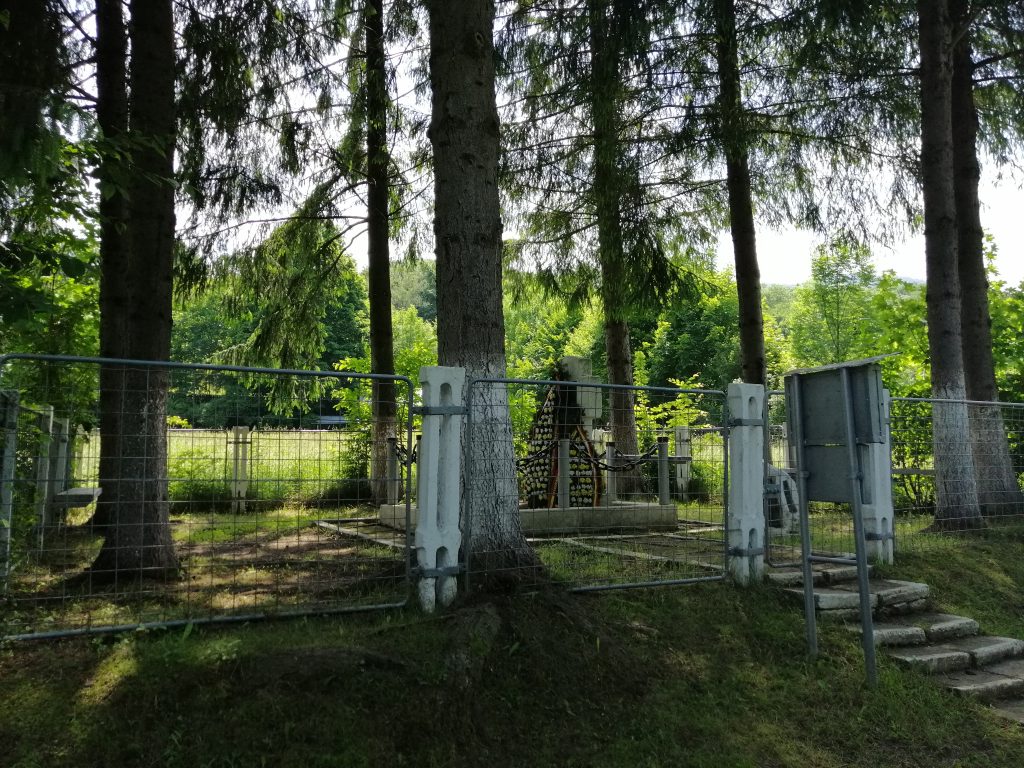
Although ONCE has clarified that the remains of those Romanian soldiers are now resting in the International Military Graveyard of Comănești – because as the Úzmezeje/Poiana Uzului settlement was evacuated the remains of the soldiers were exhumed and buried in that cemetery – the clarification came too late.
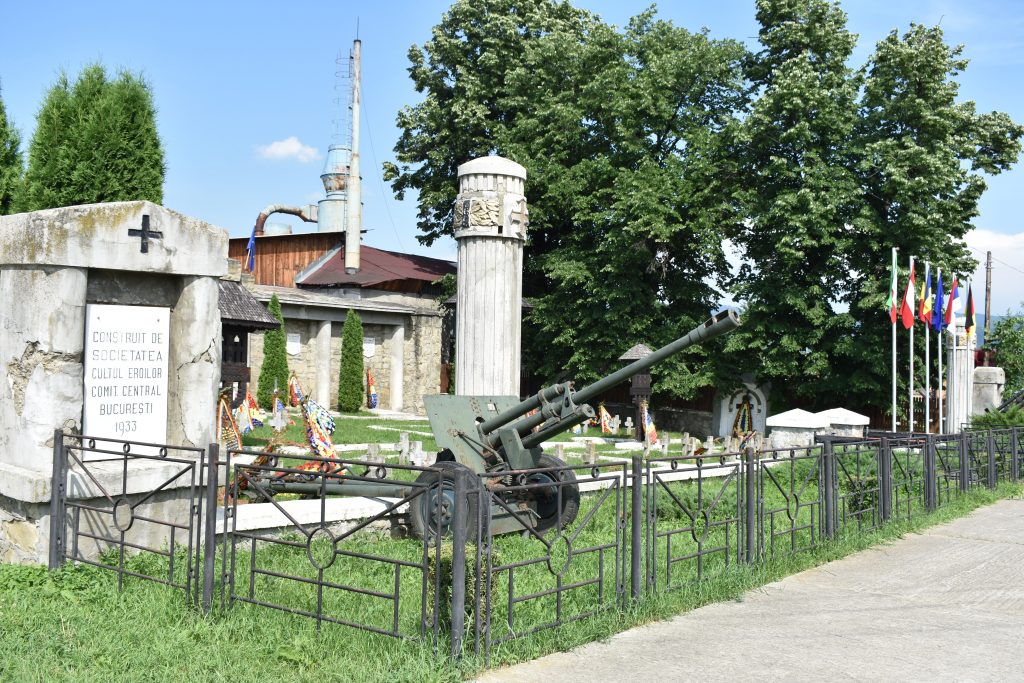
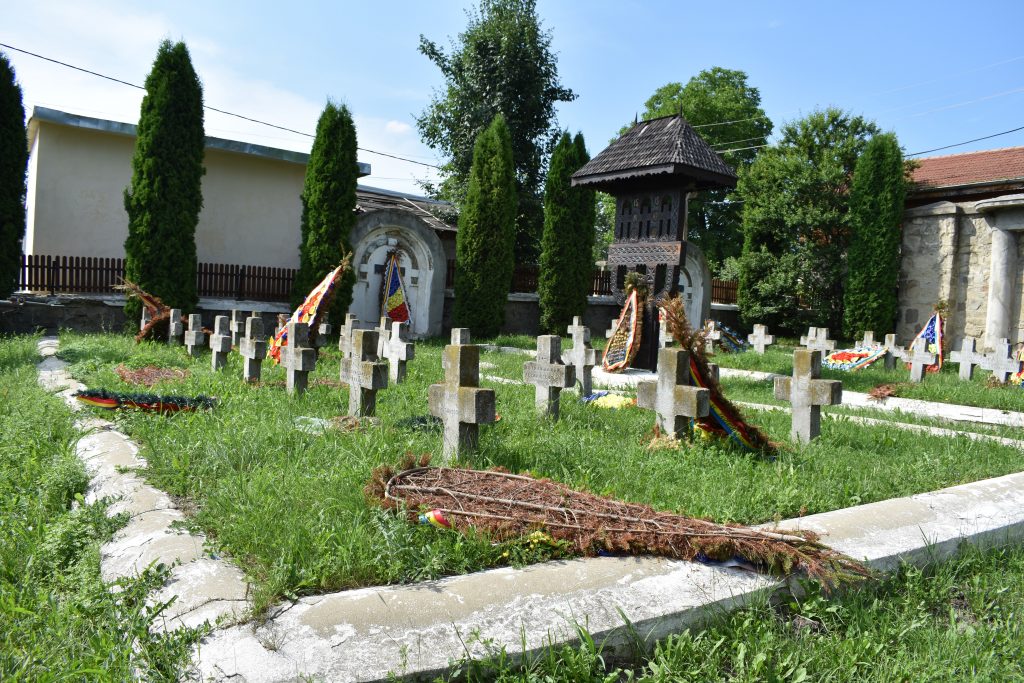
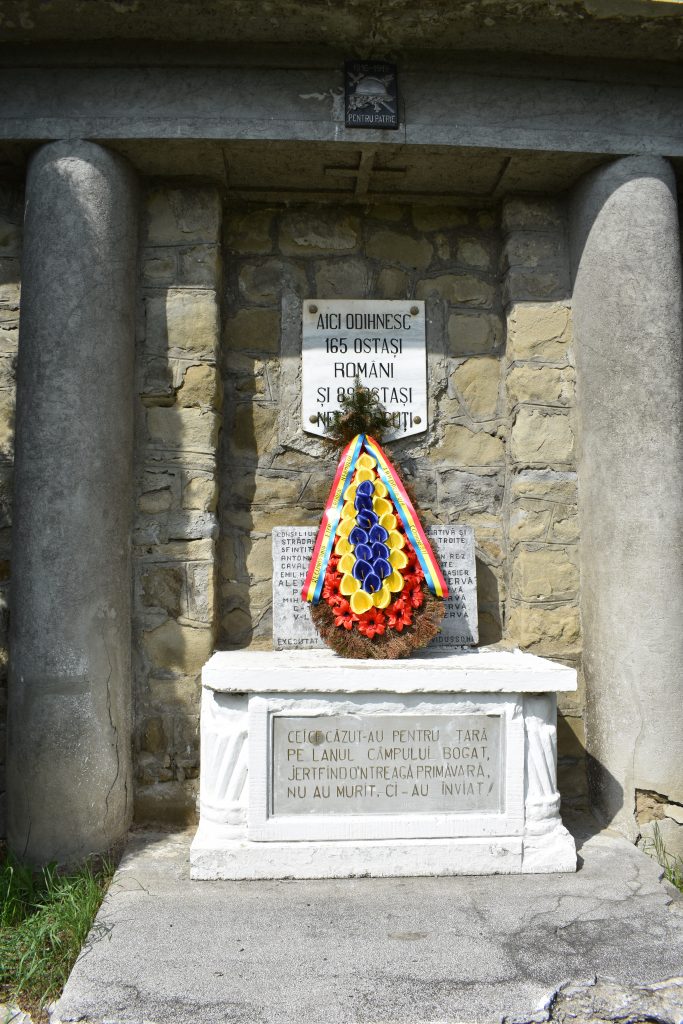
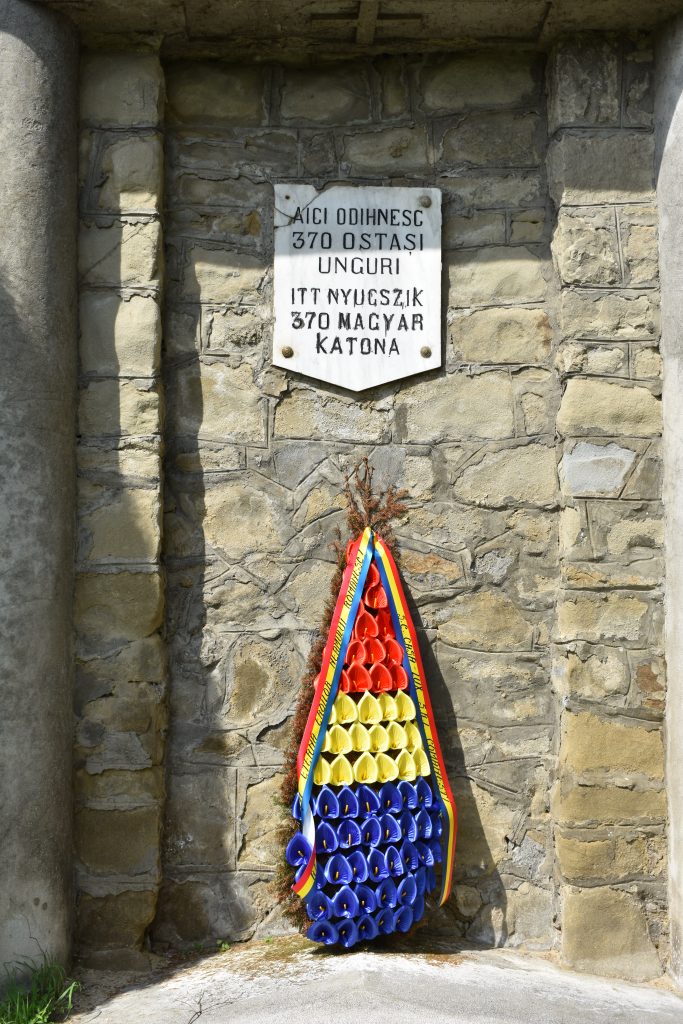
The first pictures of the works at the Úz Valley graveyard hit the web
In early April the first pictures surface on a Facebook group about the fresh graves in the Úz Valley Cemetery. The works progress rapidly, by the end of April, the memorial made of “granite” and the 52 concrete crosses featuring the “Unknown Romanian Hero” inscription are erected on the right side of the cemetery, and the proposed inauguration ceremony is set for May 17, 2019. There is problem though: one row of the newly placed crosses sits on one line of Austro-Hungarian soldiers, according to a cemetery map from Vienna. But the profanation of the cemetery doesn’t seem to disturb the Dărmănești city mayor.
Instead, as his work captured the media’s attention Toma Constantin tries to argue for the legality of the works in the Úz Valley cemetery, saying it belongs to the city it runs, and that the reason for the works is to restore the graveyard’s international nature, which disappeared in the previous restoration works. Since there is May 2019: a picture of the Úz Valley cemetery map dating back to 1917 appears and clearly shows that some of the concrete crosses were erected on top of graves of Hungarian soldiers.
The modifications issued in the Úz Valley cemetery are illegal, Romanian authorities say
On May 7, 2019, the Ministry of Culture says the work done in the graveyard is illegal: Minister of Culture Valer Daniel-Breaz tells the Dărmănești city mayor that the local authority lacks the approval of the public monuments committee for the newly erected parcel of the Romanian soldiers, hence it is illegal. A couple days later, on May 9, 2019, the Office of the State Building Inspectorate says the construction license is illegal. The inspectorate says the Dărmănești council has issued a construction license on a site without unequivocally proving that the disputed site belongs to them. It also called on the Bacău County prefect to take action and consider filing a lawsuit against the illegally issued construction license.
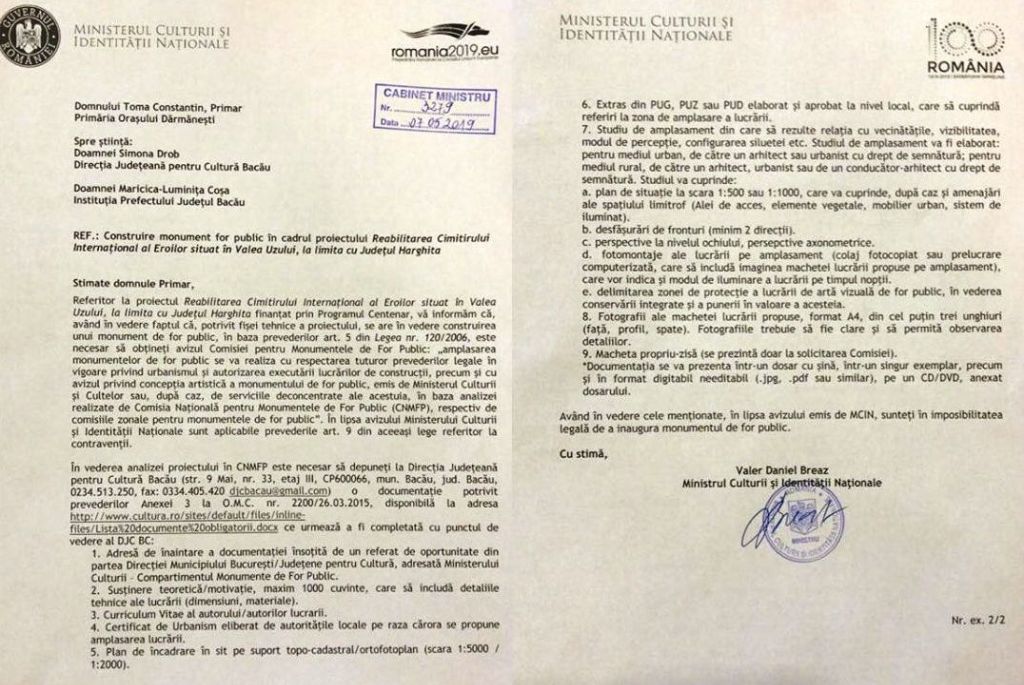
For a moment, it seems that Toma Constantin is stepping back. On May 11, 2019, the Dărmănești local authority announces that it is postponing the inauguration ceremony scheduled for May 17 in the Úz Valley until an unknown date. “The Dărmănești Mayor put a temporary hold on the inauguration ceremony, but didn’t give up its purpose. Don’t think this was the individual ambition of the Dărmănești mayor; it was backed and helped by its others likely, its party or as things get clearer the signs point to the former prefect of Covasna, now the general secretary of the Ministry of Defense, Codrin Munteanu. A quick look at the forces mobilized for the June 6 “ceremony,” the goal of the police forces was to avoid incidents, but the main goal was for this inauguration ceremony to take place, and that’s all,” Gergely told Transylvania Now.
Click here to read Part IV.
Read also Part I, Part II, and Part V.
Title image: Wooden crosses in the Úz Valley military graveyard. Photo: István Fekete